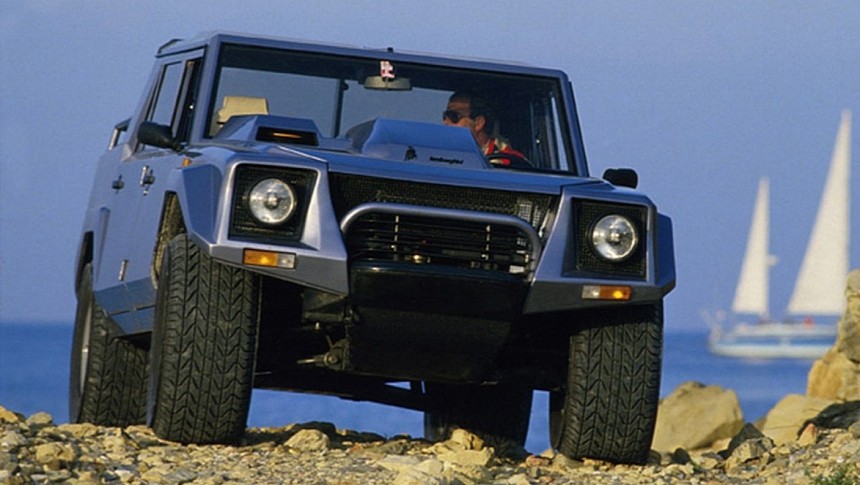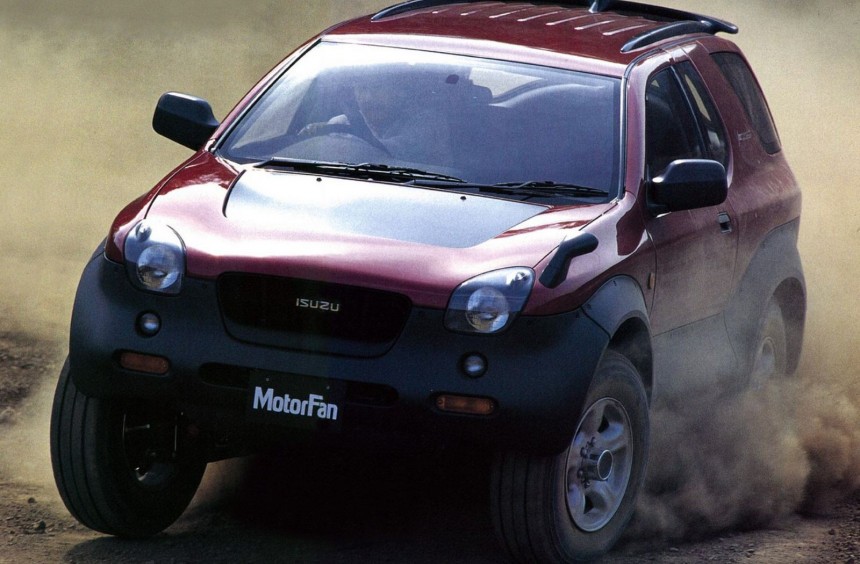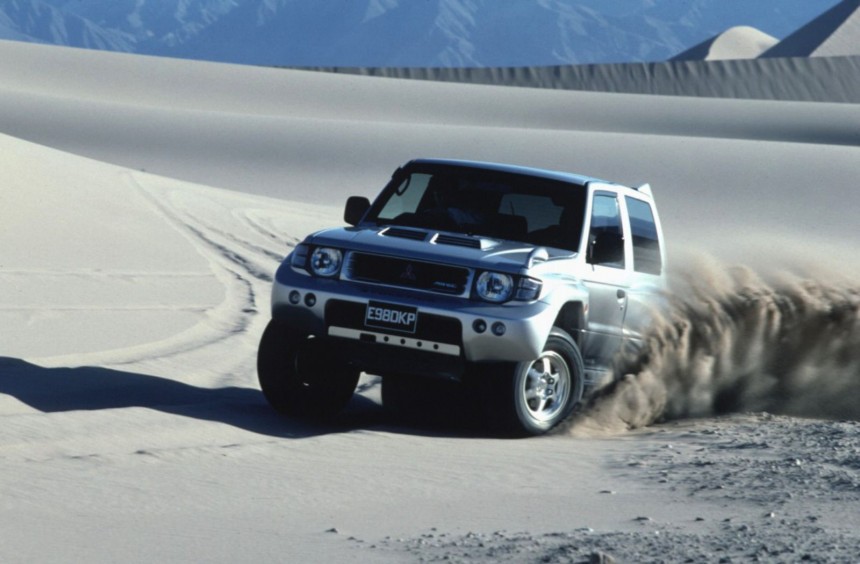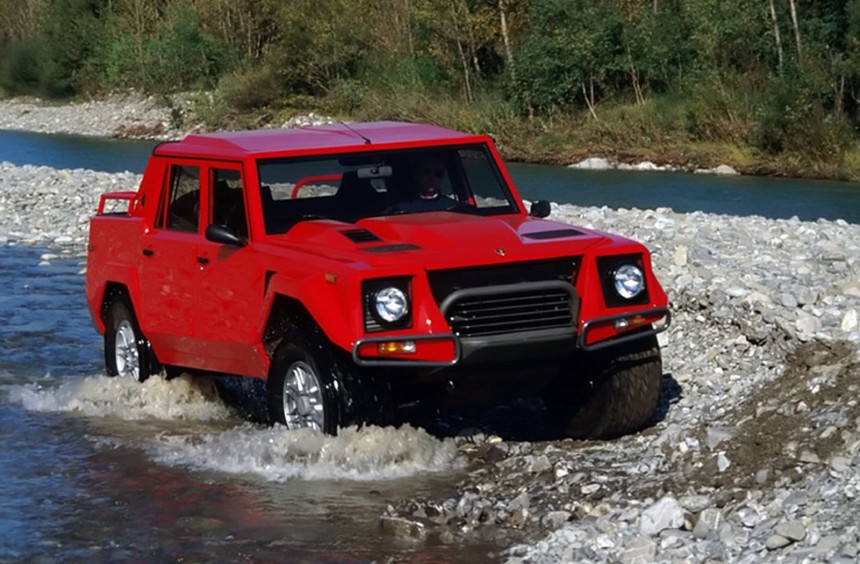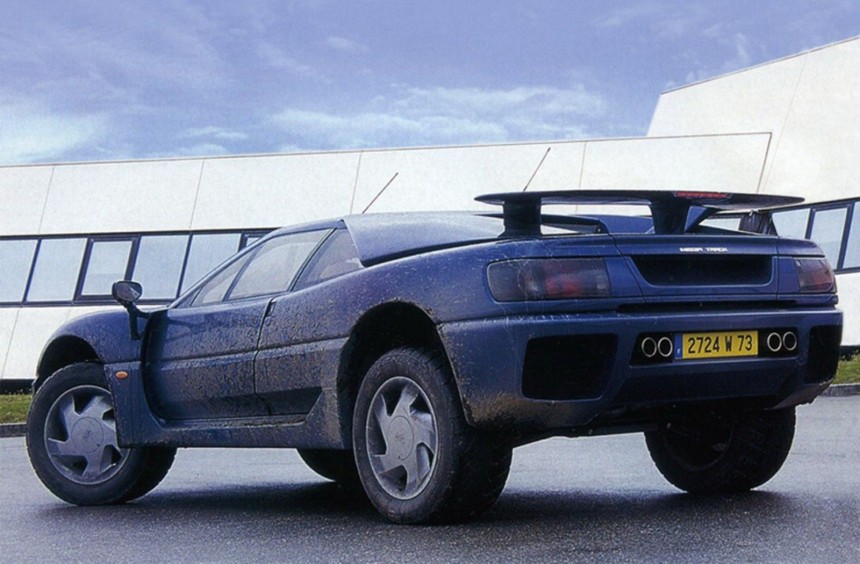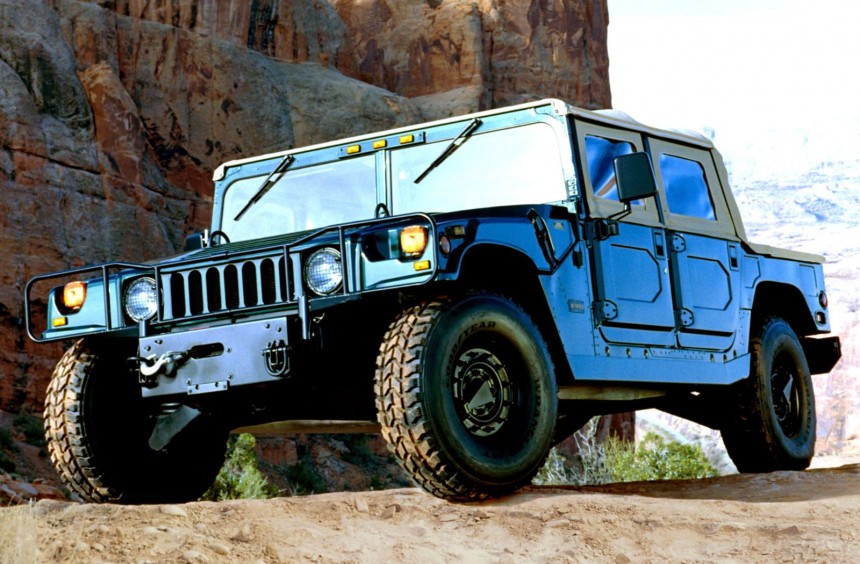The 1990s gave us some legendary sports cars and supercars but also a handful of epic off-roaders that some of you might have forgotten.
Off-roaders, as we know them today, were first developed for military use during the Second World War years.
After the war ended, pioneering off-roaders like the Jeep were transformed into civilian vehicles, and several decades later, most established manufacturers were building them.
By the 1990s, the off-road vehicle took many forms, some of which went from conventional to wild.
Though similar to a modern crossover, the VehiCROSS was based on the full-size, second-gen Isuzu Trooper SUV rather than a production car chassis.
Introduced in 1997 and manufactured until 2001, it was one of the wildest off-roaders of the 1990s in terms of design. However, under its unconventionally-styled shell, the VehiCROSS was all business.
The two-door was equipped with one of two available V6 engines from the bigger Trooper.
Though the JDM version was available with an FWD system, most examples were marketed worldwide with a sophisticated TOD (Torque on Demand) system combining a computer-controlled AWD feature for paved roads and a solid low-gear 4WD system for rough terrain.
With short overhangs and a ground clearance of 8.4 inches (213.3 mm), the VehiCROSS was a surprisingly capable off-roader.
Four Wheeler magazine named the compact SUV its "First Runner Up" for Four Wheeler of the Year in 2000, while in rally-raid guise, it won two stages at the 1998 Dakar Rally,
Speaking of the famous Dakar Rally, this monster was created to homologate the short-wheelbase Mitsubishi Pajero for the event's T2 class.
Produced from 1997 to 1999, the Evolution was based on the ordinary two-door version of the second-gen Pajero (also known as Shogun or Montero), but there was nothing ordinary about it.
Like its Lancer Evolution sibling, it received a unique body kit and many chassis modifications.
Under the scooped hood, the Evolution hid a 3.5-liter, 24-valve 6G74 V6 rated at 275 hp. The engine sent power to all four wheels through a modified five-speed manual and a sturdy 4WD system with Torsen differentials front and rear.
The system, combined with an upgraded independent suspension, meant that the Pajero Evolution was capable off-road, but its potent V6 and weight-saving treatment also made it fast on-road.
In full rally raid guise, the Evolution earned a dominant 1-2-3 finish in the 1997 and 1998 editions of the Dakar Rally.
Famous for its breathtaking supercars, Lamborghini released the Urus in 2017, and some people criticized it for being against the brand's culture.
However, in 1986, Lamborghini introduced the LM002, which became one of the wildest, most sought-after off-roaders of the 1990s by the decade's biggest stars and richest, most eccentric enthusiasts.
Developed under the project name "Cheetah," the LM002 started life as a military vehicle. However, after Lamborghini failed to secure a government contract, it became a wild civilian vehicle.
Nicknamed "Rambo Lambo," the huge off-roader had a standard 450-hp, 5.2-liter V12 shared with the Countach and Diablo. But, if potential buyers wanted more power, they could choose the optional Lamborghini L804 7.2-liter marine V12 rated at 612 hp.
Coupled with a highly-capable 4WD system, the LM002 could climb a 120% gradient while off-road but could also reach a top speed of 130 mph (210 kph) on asphalt.
The little-known Mega Track was both the wildest off-roader of the 1990s and also one of the wildest supercars of the decade.
It was developed by the French company Axiam, which, at the time, was one of the world's leading microcar manufacturers.
Unveiled at the 1992 Paris Motor Show, the Mega Track was conceived to rub elbows with the world's finest supercars but also tackle harsh trails. In other words, it was the ultimate crossover.
Power came from a mid-mounted 6.0-liter Mercedes M120 V12 rated at 394 hp. Additionally, it featured a sturdy, permanent 4WD, which was presumably also borrowed from the German manufacturer (info about the car is scarce).
Allegedly built in only five examples, the Mega Track was humongous. It weighed 5,026 pounds (2,280 kg), was longer than a W140 S-Class coupe, and was wider than the next entry on our list, the Hummer H1.
Despite that, it could accelerate from 0 to 60 mph (97 kph) in 5.8 seconds and reach a top speed of 155 mph (250 kph).
Unquestionably the most famous off-roader of the 1990s and one of the most famous ever created, the Hummer H1 started life as a successful military vehicle.
Manufactured by AM General in Mishawaka, Indiana, the High Mobility Multipurpose Wheeled Vehicle, or simply Humvee, began its military career in 1985, and it's still in service today in several parts of the world.
In 1992, the company decided to modify the Humvee for civilian use and made it available to the public in several body variations, including an SUV-style version and a pickup with two or four doors.
Initially, the H1 was powered by a 6.2-liter diesel V8 sourced from General Motors, but throughout its 14-year production run, it received newer GM V8s that could run on either gasoline or diesel.
Since it was built on the Humvee's heavy-duty chassis and received the same bombproof (more or less literally) 4WD system, the Hummer H1 became one of the most legendary off-roaders ever mass-produced.
From 1992 to 2006, over 11,000 civilian units were manufactured.
After the war ended, pioneering off-roaders like the Jeep were transformed into civilian vehicles, and several decades later, most established manufacturers were building them.
By the 1990s, the off-road vehicle took many forms, some of which went from conventional to wild.
Isuzu VehiCROSS
Introduced in 1997 and manufactured until 2001, it was one of the wildest off-roaders of the 1990s in terms of design. However, under its unconventionally-styled shell, the VehiCROSS was all business.
The two-door was equipped with one of two available V6 engines from the bigger Trooper.
Though the JDM version was available with an FWD system, most examples were marketed worldwide with a sophisticated TOD (Torque on Demand) system combining a computer-controlled AWD feature for paved roads and a solid low-gear 4WD system for rough terrain.
With short overhangs and a ground clearance of 8.4 inches (213.3 mm), the VehiCROSS was a surprisingly capable off-roader.
Four Wheeler magazine named the compact SUV its "First Runner Up" for Four Wheeler of the Year in 2000, while in rally-raid guise, it won two stages at the 1998 Dakar Rally,
Mitsubishi Pajero Evolution
Produced from 1997 to 1999, the Evolution was based on the ordinary two-door version of the second-gen Pajero (also known as Shogun or Montero), but there was nothing ordinary about it.
Like its Lancer Evolution sibling, it received a unique body kit and many chassis modifications.
Under the scooped hood, the Evolution hid a 3.5-liter, 24-valve 6G74 V6 rated at 275 hp. The engine sent power to all four wheels through a modified five-speed manual and a sturdy 4WD system with Torsen differentials front and rear.
The system, combined with an upgraded independent suspension, meant that the Pajero Evolution was capable off-road, but its potent V6 and weight-saving treatment also made it fast on-road.
In full rally raid guise, the Evolution earned a dominant 1-2-3 finish in the 1997 and 1998 editions of the Dakar Rally.
Lamborghini LM002
However, in 1986, Lamborghini introduced the LM002, which became one of the wildest, most sought-after off-roaders of the 1990s by the decade's biggest stars and richest, most eccentric enthusiasts.
Developed under the project name "Cheetah," the LM002 started life as a military vehicle. However, after Lamborghini failed to secure a government contract, it became a wild civilian vehicle.
Nicknamed "Rambo Lambo," the huge off-roader had a standard 450-hp, 5.2-liter V12 shared with the Countach and Diablo. But, if potential buyers wanted more power, they could choose the optional Lamborghini L804 7.2-liter marine V12 rated at 612 hp.
Coupled with a highly-capable 4WD system, the LM002 could climb a 120% gradient while off-road but could also reach a top speed of 130 mph (210 kph) on asphalt.
Mega Track
It was developed by the French company Axiam, which, at the time, was one of the world's leading microcar manufacturers.
Unveiled at the 1992 Paris Motor Show, the Mega Track was conceived to rub elbows with the world's finest supercars but also tackle harsh trails. In other words, it was the ultimate crossover.
Power came from a mid-mounted 6.0-liter Mercedes M120 V12 rated at 394 hp. Additionally, it featured a sturdy, permanent 4WD, which was presumably also borrowed from the German manufacturer (info about the car is scarce).
Allegedly built in only five examples, the Mega Track was humongous. It weighed 5,026 pounds (2,280 kg), was longer than a W140 S-Class coupe, and was wider than the next entry on our list, the Hummer H1.
Despite that, it could accelerate from 0 to 60 mph (97 kph) in 5.8 seconds and reach a top speed of 155 mph (250 kph).
Hummer H1
Manufactured by AM General in Mishawaka, Indiana, the High Mobility Multipurpose Wheeled Vehicle, or simply Humvee, began its military career in 1985, and it's still in service today in several parts of the world.
In 1992, the company decided to modify the Humvee for civilian use and made it available to the public in several body variations, including an SUV-style version and a pickup with two or four doors.
Initially, the H1 was powered by a 6.2-liter diesel V8 sourced from General Motors, but throughout its 14-year production run, it received newer GM V8s that could run on either gasoline or diesel.
Since it was built on the Humvee's heavy-duty chassis and received the same bombproof (more or less literally) 4WD system, the Hummer H1 became one of the most legendary off-roaders ever mass-produced.
From 1992 to 2006, over 11,000 civilian units were manufactured.
